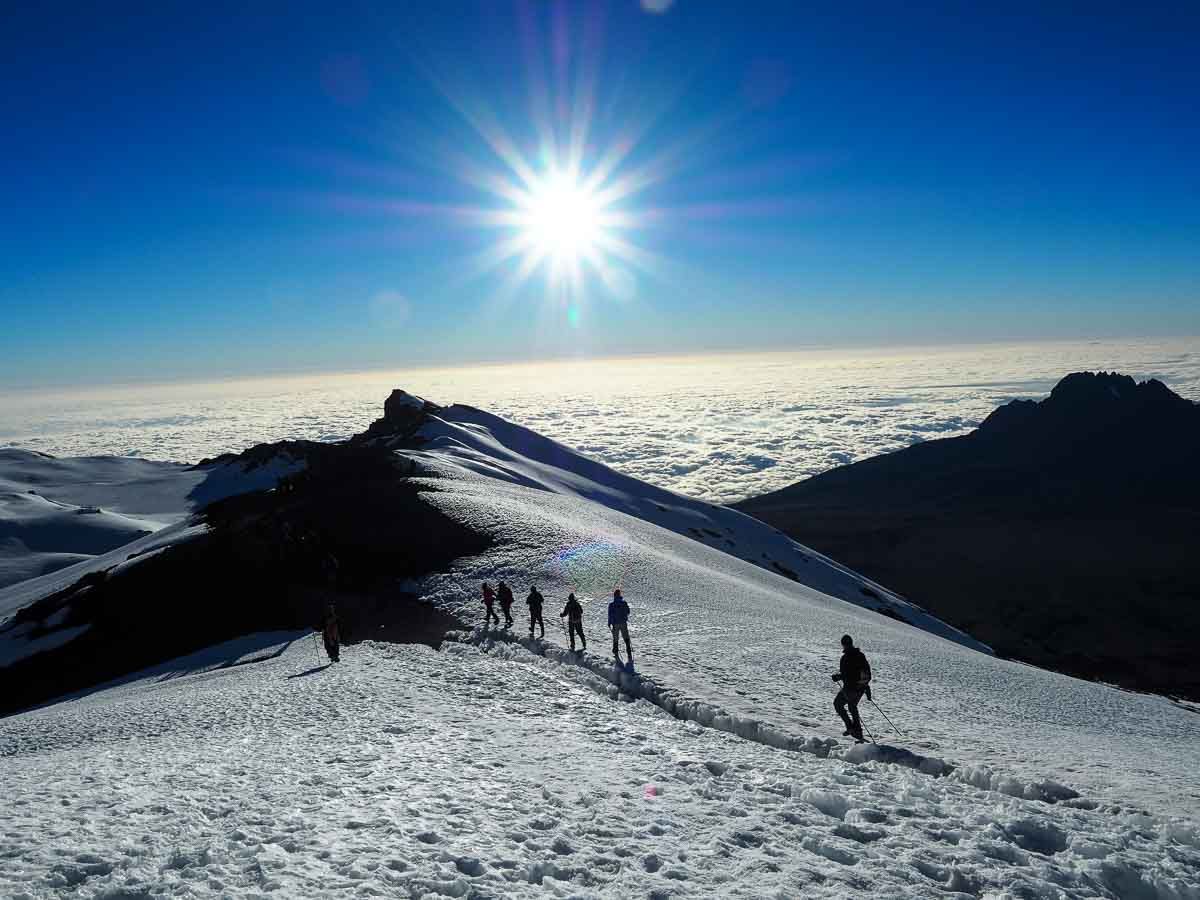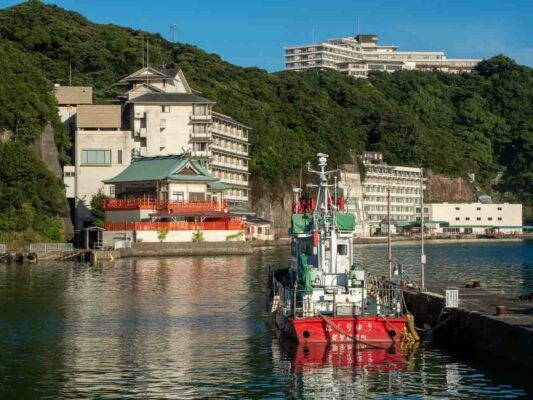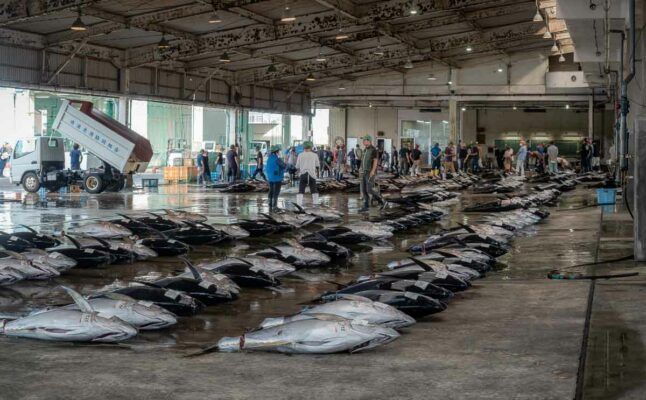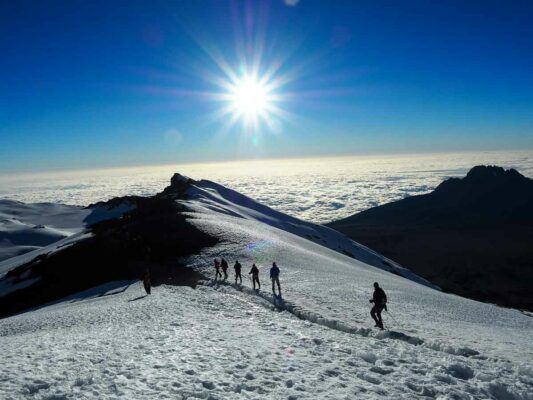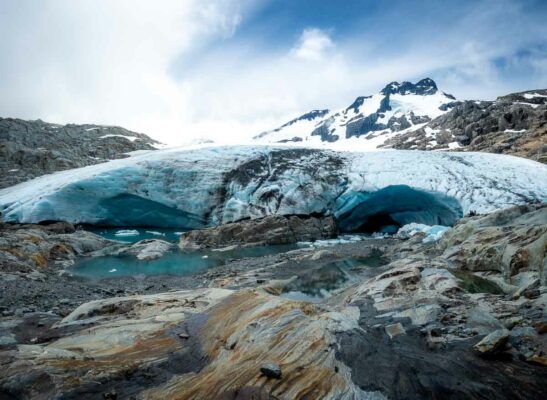No products in the cart.
Hiking, Insurance, Kilimanjaro, Travel Guides
The Best Travel Insurance for Climbing Kilimanjaro (And Who I Used!)
Climbing Mount Kilimanjaro comes with risks and uncertainties you need to be prepared for.. In fact, most trekking comanies won’t let you on the mountain without insurance in place!
And what I learned doing my research is that not all travel insurance is created equal.
Some may not cover you for high-altitude trekking, helicopter rescue, or acute mountain sickness. Others have hidden exclusions, limitations, or deductibles that could leave you out of pocket in case of an emergency.
Long story short, your usual travel insurance won’t cut it, and neither will your credit card’s complimentary insurance. You’ll need a company that offers a specific inclusion for hiking up to 6000m altitude. I used World Nomads for my trip and still believe they’re the best option in terms of both price and service.
In this blog post, I’ll share 6 of the best companies I found. Some I’ve used myself (on various trips), while others are insights and recommendations of people I met during my travels.
1️⃣ World Nomads (Best Overall) [Jump To Review]
2️⃣ Truetraveller (Best for UK and EU Citizens) [Jump To Review]
3️⃣ Global Rescue (Best Medical Evacuation Inclusion) [Jump To Review]
4️⃣ SafetyWing (Best for Long-Term Travelers) [Jump To Review]
5️⃣ IMG (Best for personalized plans) [Jump To Review]
6️⃣ Redpoint Travel Protection (Best for Helicopter Rescue) [Jump To Review]
Table of Contents
Why Do You Need Insurance for Climbing Kilimanjaro?

Having comprehensive insurance gave me peace of mind knowing I was protected from these scenarios.
Altitude sickness
This is a serious condition that affects many climbers on the mountain. It can cause headaches, nausea, vomiting, dizziness, fatigue, and difficulty breathing. In severe cases, it can lead to life-threatening complications, like pulmonary embolism.
Injuries and accidents
Climbing Kilimanjaro involves walking on uneven terrain, crossing rocky slopes, and dealing with extreme weather conditions. You could slip, fall, twist your ankle, break a bone, or suffer from frostbite or hypothermia.
Travel disruptions and cancellations
I had to book my flight, accommodation, and everything else in between to ensure a pleasant trip.
But I wasn’t oblivious to the fact that anything can go wrong at any stage of the trip.
I could experience flight delays (or miss it altogether) lose my luggage, get sick, or the said destination might be experiencing civil unrest.
These can cost a lot of money, time, and stress.
The 6 Best Travel Insurance Companies for Climbing Kilimanjaro
World Nomads (Best Overall)

World Nomads is one of the most popular and trusted companies. I’ve used them for most of my adventures and recommend them to anyone looking for a reliable operator.
What package you need and pricing
You won’t go wrong with the Explorer Plan. This plan covers you for high-altitude trekking up to 6,000 meters and other extreme activities.
For my 8-day Lemosho route trip, I paid around $170.
Key Benefits
Truetraveller (Best for UK and EU Citizens)

This UK-based company offers flexible and affordable coverage for a range of adventurous travelers.
What package you need and pricing
The Traveler Plus plan coupled with the Ultimate activity pack is the best option. It covers altitudes of up to 6,000 meters and other extreme activities.
You can expect to pay around £331.
Key Benefits
Global Rescue (Best for Medical Evacuation)

Global Rescue is a US-based company that provides emergency medical and security services to travelers around the world.
What package you need and pricing
To be covered for your trip, you’ll need to choose the Short-Term Membership. It offers comprehensive medical evacuation regardless of the altitude, activity, or reason.
A 14-day trip costs $745.
Key Benefits
SafetyWing (Best for Long-Term Travelers)

This Norwegian-based company offers flexible and affordable coverage for long-term travelers and digital nomads. Their services are subscription-based and cover a wide range of scenarios.
What package you need and pricing
I recommend you subscribe to the Remote Health policy. It doesn’t cover anything above 4,500 meters, but it’s still functional.
The policy costs around $85 per month.
Key Benefits
IMG (Best for personalized plans)

IMG provides comprehensive and customizable coverage. They mainly service the US, but there are plans for non-US citizens too.
What package you need and pricing
For climbing Mt. Kili, you’ll need the Patriot America Platinum plan, which will cost you $37.
Key Benefits
Redpoint Travel Protection (Best for Helicopter Rescue)

Redpoint is another US-based company that covers extreme activities.
What package you need and pricing
The Ripcord plan covers you for medical expenses up to $100,000 and over 32 cancellation reasons. For a 10-day trip, you can expect to pay around $236.
Key Benefits
Key Inclusions to Look for When Shopping for Kilimanjaro Travel Insurance
1. High Altitude Kilimanjaro Trekking
Not all policies cover you for trekking above a certain altitude. Kilimanjaro is 5,895 meters (19,341 feet) high, so a policy that covers up to at least 6,000 meters (19,685 feet) is pretty decent. Bear in mind that some policies may require you to pay an extra premium or buy an add-on for this coverage.
2. Helicopter Rescue
If you get seriously ill or injured on the mountain, you’ll need to be evacuated by helicopter to the nearest hospital or airport. This process costs thousands of dollars. Your policy should cover you for this expense.
Generally, this won’t be needed for AMS The guides have these contraptions.. think a unicycle combined with a stretcher.. which are built to race you down the mountain real quick if anything goes wrong.
Helicopter rescue is more for a serious incident like falling off a cliff, or an unexpected medical emergency.
3. Acute Mountain Sickness (AMS)
As mentioned earlier, this condition affects many climbers.
To be on the safe side, get a policy that covers you for medical expenses and emergency evacuation related to acute mountain sickness.
Usually, the treatment for AMS is just getting down to lower altitude FAST before your body shuts down. But in come cases you may need hospital or further medical treatment.
4. Trip Cancellation
Sometimes it happens that you have to cancel your trip because of an illness, injury, death, or any valid, cancellable reason. You’ll need insurance that covers the full amount of your trip, including your flights, accommodation, transfers, guides, permits, and equipment.
Remember you’ll be spending north or 2,000 USD on your hiking trip alone, not including flights or accommodation, so getting some money back for this is a big deal.
5. Trip Interruption
This is a similar inclusion to trip cancellation. It covers you for the unused portion of your trip and the additional costs of returning home if you have to cut short your trip for a covered reason.
6. Trip Delay
This is a helpful inclusion to look for. It covers the extra expenses you may incur if your trip is delayed for more than a certain number of hours.
A few common covered reasons are flight cancellation, flight delay, missed connection, bad weather, or strike.
Ideally, get a policy that covers the reasonable costs of meals, accommodation, transportation, and communication during the delay.
7. Medical Expense/Emergency Evacuation
As the name suggests, this covers the medical expenses and emergency evacuation costs if you fall sick or become injured. Most policies have a limit, but I recommend you opt for one that provides an adequate amount–ideally anything above $100,000–of medical expenses and emergency evacuation costs.
8. Baggage and Personal Effects
This is a nice-to-have benefit.
But don’t totally disregard it.
It includes the loss, theft, or damage of your baggage and personal effects on your trip. Get a policy that covers the value of items you are carrying. Including your high-value items, like electronics and cameras.
Do You Need Insurance to Climb Kilimanjaro?
The short answer is no, but you should!
In fact, many of the tour operators (particularly the good ones) mandate it as a prerequisite before departing. Even if your tour operator or guide does not require you to have insurance, I highly recommend that you get some as the risks and expenses are huge for only another couple of hundred dollars.
Its peace of mind too!
Climbing Kilimanjaro is a risky and expensive endeavor. You never know what could happen on your trip. Having a good travel insurance policy will give you peace of mind and financial security in case of an emergency.
Will Your Credit Card Insurance Provide Enough Protection?
Some credit cards offer travel insurance benefits. But these benefits are usually limited and may not cover high-altitude trekking, helicopter rescue, or acute mountain sickness. Others may have low limits, high deductibles, or strict exclusions that could leave you out of pocket in case of an emergency.
Don’t rely on your credit card insurance alone for your trip. Just buy a separate or supplementary travel insurance policy.
4 Tips When Booking Insurance for Your Kili Trip
- Compare the options
- Read the small print
- Sign up before you leave
- Save the documents
Compare the options
Compare the different travel insurance options to find one suited to your needs and budget. Online comparison tools I’ve used for this are InsureMyTrip, Squaremouth, and TravelInsurance.com.
Read the small print!
This goes without saying, but you need to read the fine print of the policy before you buy it.
Carefully!
Understand what it covers and what it doesn’t. Pay attention to the terms and conditions, exclusions, limitations, deductibles, and claims process. The best insurance should cover you for all the potential risks and expenses you may encounter on your trip.
Sign up BEFORE you leave
Some companies may not cover you if you sign up after you’ve already departed from your home country. Others impose a waiting period or higher premium if you sign up late.
To avoid unnecessary hassles, sign your policy before you board your plane.
Save the documents
Keep a copy of your policy document, policy number, receipts, and any other vital information related to your coverage. They will come in handy if you need to make a claim.
Kilimanjaro Travel Planning Cheatsheet
🚑 Should I buy travel insurance for Tanzania?
100% YES! — Tanzania has now introduceed “free” healthcare but it’s only for citizens! Tourists need travel insurance in case anything happens on your visit. Also be aware many policies won't cover high altitude hiking as it's a high risk activity!
(that's right, check the t&c's on your complimentary credit card insurance)
I highly recommend World Nomads as you can get specific add-ons for high altitude hiking UP TO 6000m (Which most travel insurance companies don't offer!)
🎫 Do I need a visa for Tanzania?
Probably not — Tanzania now provide a visa on arrival (VoA) for most western countires which allows you stay for up to 90 days. However, some other countries do need a pre-approved eVisa (check here!). VoAs cost $50 USD for a single entry - Note, US Citizens are required to get a Multi-Entry visa which costs $100 USD. (View visa prices here)
If transiting through Kenya (a lot of people fly via Nairobi), you'll need a Kenyan visa too. Visa's cost $20 for a 3 day transit visa and $50 for a toursit visa
(By the way, on both my interactions with the imigration officers in kenya they tried to scam me, so know what your obliged to pay and BRING THE EXACT CASH for the visa!)
💉Do I need any vaccinations for Tanzania?
YES! Make sure you are up-to-date with all your vaccines. Common travel vaccines include Hep A/B + Typhoid, and Diphtheria + Tetanus.
A yellow fever vaccination isn't a requirment to visit Kilimanjaro but is for neighbouring areas in East Africa. In reality, you will might not be allowed back into your home country on your return (I was asked for proof of vaccination upon returning to Australia) so getting this jab prior made for good peace of mind.
Rabies is an issue in Tanzania but the vaccine is expensive and ineffective as a preventative measure (it only lasts a few years and you'll need to get them again if you require treatment). If bitten by a stray dog seek immediate medical attention!
As always, talk to your GP or specialised travel doctor a few weeks BEFORE you leave.
🏩 What’s the best Kilimanjaro Tour operators?
Your only realy two options here are Kumano Travel and Booking.com. Its a complicated process so I wrote this guide here on the best kumano kodo accomodation options
If you don't want to figure it all out (it's meant to be a holiday after all) you can book a package tour. Here are my recommendations for both guided and self-guided.
💸How do you pay for things in Tanzania?
Cash is king in Tanzania, so you'll want to get some folding tender out from an ATM when you land. Larger businesses and hotels will take Debit / Credit Card but most resturants, and street vendors want cash. I even had to pay for my Kili trip in cash!
I personally use a Wise debit card for all my international money needs as they only convert the funds when you make payment, plus they offer a much better spread (margin on the true exhange rate) than the banks do. They work in all the Tanzanian ATMs I tried.
🚌 What's the public transport like in Tanzania?
There is a good basic network of local and inter-city busses in Tanzania and travel this way is very cheap. Domestic flight are also very affordable and a far more comfortable option. Checkout Busbora for booking bus tickets online.
📲 How do I get internet/data/wifi in Tanzania and on the mountain?
This one needs a whole nother article, but the short version is prepaid SIM cards are cheap and availible to tourists and locals alike (You don't need a pricey tourst SIM!)
Your cheapest option is buying a physical sim card on the street corner once landed and getting the shop assistant to help you set it up. I went with Vodacom and had generally good coverage, even up on Kili!
Another option if you're visiting other African countries is the Nomad eSIM. This is a little more expensive but gives you connectivity across 14 neighbouring African Countries!
✈️ What’s the best site to buy flights to Tanzania?
For finding cheap flights, I recommend Skyscanner. Once you find the flight you're looking for, I'd then suggest booking directly with the carrier (even if it costs a few $$ more than with one of the agreggators/agencies).
💧Can you drink the water in Tanzania?
Safest not to — tap water in Tanzania may be OK (the locals drink it) but is generally untreated and not reccommended for tourists. Purchase bottled water for drinking and teeth brushing.
🏔️💧Can you drink the water on Mount Kilimanjaro?
Yes — Your tour company with ensure the water provided to you is safe to drink by either carrying in bottled water, or by treating stream water with purification tablets or by boiling it. If you want to drink water from the rivers and streams you generally can but should do so at your own risk. ALWAYS follow best practice and drink from fast flowing water as far up stream as possible. I'd also recommend a Brita Water Bottle for rehydrating on the trail safely.

